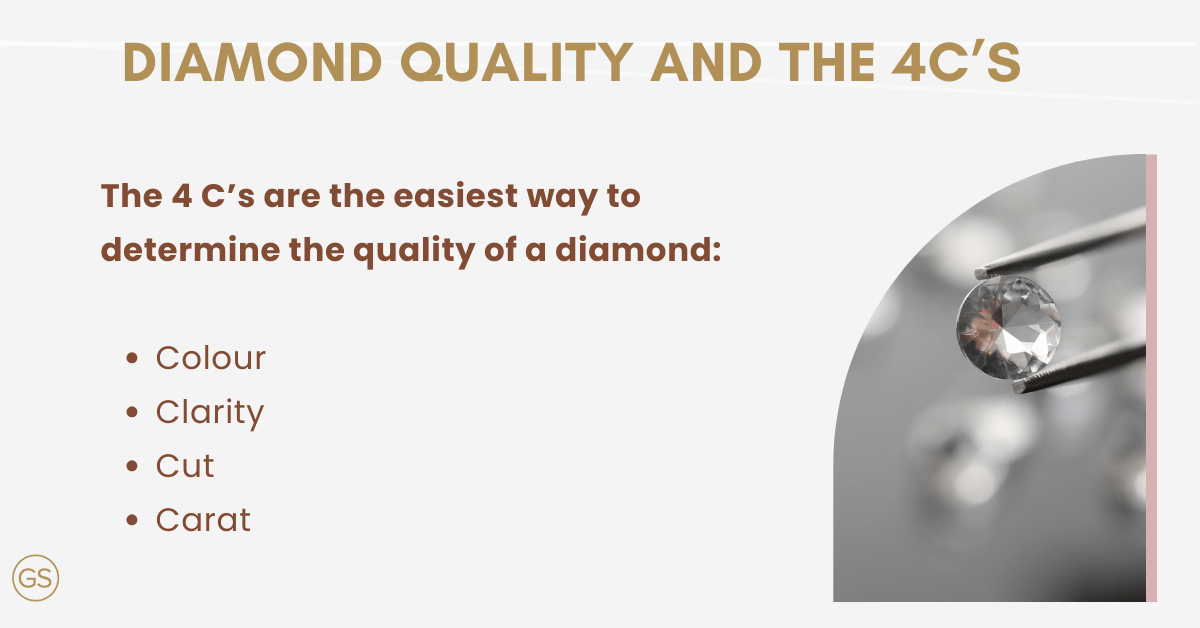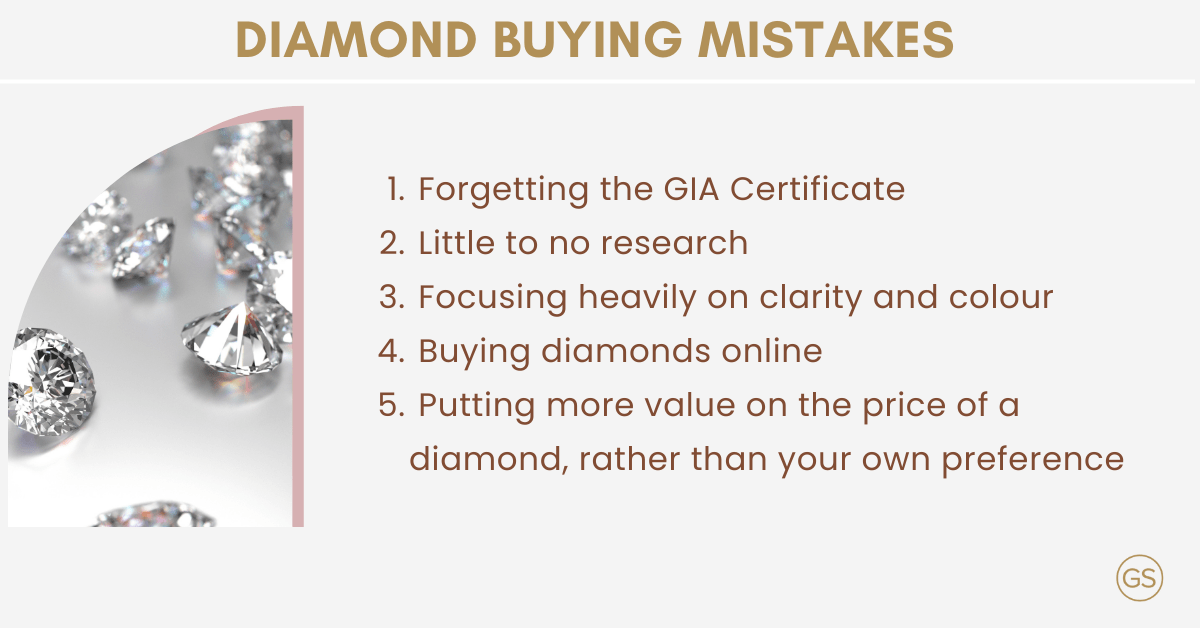
In a bid to educate you about the diamond-buying process, we would like to mention some of the most common mistakes couples commit while buying diamonds for their engagement or wedding. By learning from the mistakes made by others, you can actually ensure that you follow a flawless pattern for buying the diamonds you want.
Most of the time, buying a diamond means that you’re about to be involved in important occasions such as weddings, birthdays, St. Valentine’s Day and other significant and important dates in your life. However, these important dates can get tarnished if you fail to buy the diamonds with care and end up with mistakes, which become significant for both of you in terms of the real quality of the diamond and further consequences.
The joy, which is often associated with momentous occasions like marriage, can get overshadowed due to the intimidation and real disappointment that you can experience if you make a mistake due to lack of knowledge or other reasons.
Jewelry professionals within the industry can discuss the features associated with diamonds with amazing fluency and for sure you are always welcome to be involved in this process. This fluency can get to your head and make you forget key details that you should have known of during the purchase, such as a wrong determination of diamond quality, absence of documentation and as a result mistakes in pricing.
In a bid to educate you about the diamond-buying process, we would like to mention some of the most common mistakes couples commit while buying diamonds for their engagement or wedding. By learning from the mistakes made by others, you can actually ensure that you follow a flawless pattern for buying the diamonds you want.
Table of Contents

As jewellery professionals ourselves, we understand how confusing it can be for buyers when we spout industry-related terms like “1.15 carat” or “VS2 clarity”. Many buyers are hesitant to get too involved in understanding these terms and miss out on key details relating to diamond quality, purchase documentation and, of course, pricing.
The good news is that you don’t have to be a diamond expert to tell if a diamond has the qualities you’re looking for — all you need to keep in mind are the 4Cs. The 4Cs, namely Colour, Clarity, Cut and Carat, are the easiest way to determine the quality of a diamond.
The colour of the diamond is rated on a scale from D to Z. A colourless diamond is rated at D, with other diamonds of other colours, such as yellow, red, pink, and blue, marked on the scale accordingly. Conventionally, a D colour-rated diamond is said to be of the highest quality and will command the highest price in terms of colour.
The clarity of a diamond is meant to be a measure of the number, size, and position of blemishes and inclusions present in it. These imperfections are there in nearly all diamonds and usually can only be seen under 10x magnification, not so much with the naked eye. Diamonds that are found to be clear and free from all inclusions are categorised as FL or flawless diamonds, but these are extremely expensive.
The cut of a diamond refers to its shape and how well it’s been moulded. A good cut for a diamond will be able to reflect light well, giving it its signature brilliance. It’s what makes a diamond special, which is why the cut plays an imperative role in making the diamonds look the way they do.
The final classification for diamonds is the carat weight. Not be confused with size — carat weight actually refers to the mass of the diamond and usually ranges from 0.2 up to 10.0 carats. For context, 1 carat is equal to 200 mg.
Keeping in mind the 4Cs outlined above, here are some of the most common diamond-buying mistakes that most buyers make:
Forgetting to Get a GIA Certificate
The GIA (Gemological Institute of America) is the industry-leading authority on the quality of diamonds. GIA provides all retailers with a certification that confirms a diamond’s price and includes a description of it with respect to the 4C’s that we’ve mentioned above.
Apart from validating a diamond’s quality and value, the certificate also has a top-down map of the diamond, which you can use to see whether the diamond is the same as the one displayed on the certificate, adding further proof and identification for the diamond.
The certificate provided by GIA is of utmost importance because it authenticates all details pertaining to the diamond you’re about to buy. If you are buying a diamond that has no certificate, be warned that you might not be actually getting what you are paying for.
Not Doing Enough Research
Many people nowadays just walk in to buy a diamond without doing their research. Let’s be honest - diamonds are precious and significant purchases, so you should at least put some effort into gathering some research before making the purchase. Without the proper knowledge, you can easily get duped by a fraud retailer and end up with a costly but worthless gem.
For starters, we recommend reading more about the 4C’s of buying diamonds. Once you have the right understanding of them, you can then use them as a basis to search for a diamond that matches the price and quality you desire.
Focusing Too Much on Clarity or Colour
The lack of proper knowledge of blemishes and inclusions often leads buyers to assume that the most flawless diamonds are the best ones. In reality, what you need to look for is whether a diamond is eye-clean or not. Eye-clean diamonds don’t have visible blemishes and inclusions when seen without magnification.
Similarly, thinking that colourless diamonds with a D rating are the best option is only going to cost you more. Buyers can get literally the same kind of diamond, with a G rating, at a price that is a lot lower, with barely any difference in its overall appearance.

Buying Diamonds Online
It is difficult often to evaluate and understand how the diamond will suit the wearer and how it will sparkle without seeing it with your own eyes — and we don’t mean in pictures. Pictures or videos on websites can only capture so much of a diamond’s brilliance, which is why you should never purchase diamonds online if you haven’t seen them in person. By visiting a physical store, like our GS Diamonds store in QVB, you can evaluate and check its quality via microscope, seeing its sparkle and light firsthand. Physically touching and feeling the ring will also help you to envision how your celebration will be in the most natural way.
Price Isn’t Everything
Big diamonds aren’t always the most expensive ones: everything depends on a diamond’s quality and its features. So often, a little diamond with flawless colour, clarity, and the perfect cut will cost more and sparkle stronger than any other diamond on the finger of your loved one. That’s why when it comes to deciding on a diamond, personal preference is always the priority, not price. Remember, spending more will not guarantee you a great diamond, you’ve got to put in the effort to find what you want.
Having gone through the list of the most common diamond-buying mistakes, you’re probably wondering: “What are the best diamonds to buy?”.
The answer is simple — the best diamonds to buy are the ones that you’ve fallen in love with and fit you the best. Diamonds aren’t just valuable gemstones; they are also pieces of art that should complement your or your loved one’s personality and individuality.
Of course, having a budget for your diamond purchase helps, but you should be prepared to explore the different options available to find the perfect stone.
Getting expert guidance to show you which diamonds may fit your preferences and budget is always a good idea. If you need any more advice, feel free to give our friendly team a call, or pop by our store to take a look for yourself. Whatever you decide, we wish you the very best in the search for the perfect diamond!